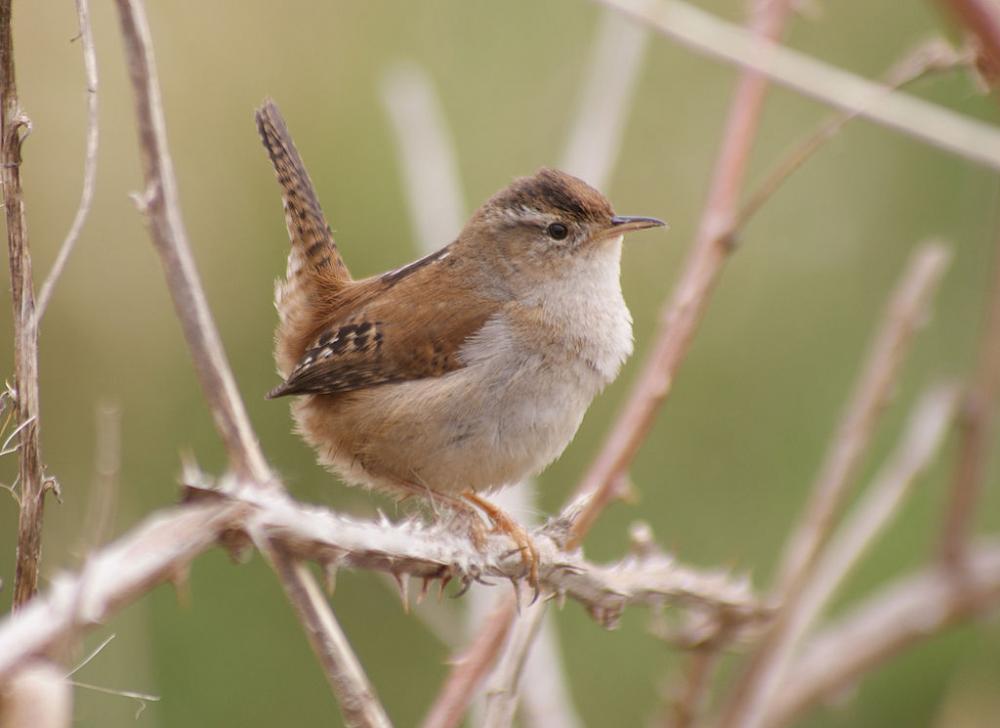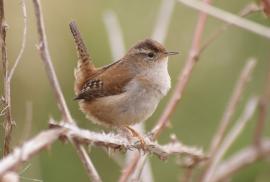Guide to Boreal Birds
Overview
This wren feeds entirely on insects it takes from plants as well as the surface of water. It is a secretive bird; even the singing territorial male remains well hidden, briefly climbing a cattail for a look at an intruder. The male has a number of mates, each of which builds a nest of her own. The male may also build up to half a dozen "dummy" nests, often incomplete, one of which may be used as a roost. Thus a marsh frequented by these birds often contains many nests in various stages of completion. Locating a nest with eggs or young in it can take much time, which may be one purpose of the dummy nests.
Description
4-5 1/2" (10-14 cm). Smaller than a sparrow. Brown above, pale buff below, with bold white eyebrow and white-streaked back.
Voice
Liquid gurgling song ending in a mechanical chatter that sounds like a sewing machine.
Nesting
5 or 6 pale brown eggs, speckled with dark brown, in a globular nest of reeds and cattails with a side entrance. Nest is lined with feathers and cattail down and anchored to reeds.
Habitat
Freshwater and brackish marshes with cattails, reeds, bulrushes, or sedges.
Range/Migration
Breeds from British Columbia, central interior Canada, Manitoba, and Nova Scotia south to Mexico, Gulf Coast, and Florida. Winters across southern tier of states, north to Washington on West Coast and in East to New Jersey.



